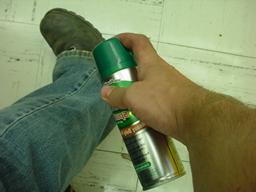


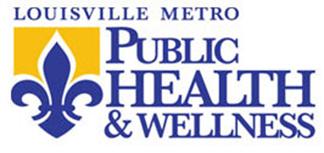

|
. Louisville Metro Public Health |
|
Lexington-Fayette Public Health |
|
In many areas, mosquito populations can be drastically reduced by methods which are orten referred to as ‘source reduction” and “cultural control.” The idea of source reduction is to eliminate places where mosquitoes can breed and reproduce. All mosquitoes need water to develop through their larval stages. This does not necessarily mean a pond or stream, but also includes bird baths, kiddie pools, and even discarded pop cans. One way people can help reduce the risk of mosquito borne diseases in their neighborhoods is to help reduce some of these types of mosquito breeding habitats. It’s a good idea to start these practices early in the season– just because the mosquitoes aren’t biting yet, doesn't mean that they’re not developing. |
|
Here are some ways you can help to stop mosquitoes from breeding in your backyard:
¨ Drain and remove trash, bottles, and debris holding water ¨ Recycle any unused containers that could collect water, including old tires! ¨ Change water weekly in birdbaths, wading pools, watering troughs, and animal bowls. ¨ Fill in holes, depressions, and puddles in your yard. ¨ Make sure your culverts and ditches are draining properly ¨ Check and clean out clogged gutters to ensure drainage ¨ Keep ornamental ponds stocked with fish ¨ Fix leaky hoses and faucets ¨ Drain water from flowerpots and garden containers ¨ Turn over wheelbarrows, buckets, and other items that collect water ¨ Adjust tarps covering woodpiles, boats, and grills to remove standing water ¨ Encourage natural enemies of mosquitoes, such as warblers, swallows, martins, and other insect feeding birds. (Click here to learn how to build nesting boxes to encourage these species) *Note: This will take you from our site. You will need to use the back button to return. |
|
Mosquito Control in Kentucky |
|
Many municipal, county, and state agencies work to reduce the risks of mosquito borne diseases in their communities. Click one the links below to view what types of control are being conducted around the bluegrass and when spraying will be conducted. *Note: This will take you from our site. You will need to use the back button to return. |
|
Vector Information |



|
How You Can Help! |
|
Strange Lifestyles of Some Vectors: All mosquitoes need water to survive as larvae and grow into adults. Some mosquitoes, such as the House Mosquitoes, lay their eggs in rafts on the surface of standing water, and may hatch within a few days. Others, such as the Asian Tiger Mosquito, lay their eggs directly on the surface of a container, such as a old tire, which remain for weeks or months until they are triggered to hatch by being covered by water. Some mosquitoes have rather bazaar life histories, such as the Cattail Mosquito, which, as a larvae, only survives by piercing submerged plant tissue (like cattail shoots) with its siphon (basically a snorkel) and breathing through chambers in the plant stem. A few mosquitoes, such as the Orthopodomyia and the predatory Toxorhynchites, survive the winter as larvae in water-filled tree holes that do not freeze completely. One interesting group, the Pitcher Plant Mosquitoes, grow as larva in the water-filler leavers of pitcher plants, even though this fluid is normally a digestive juice so the plant can consume insects. The larvae feed on this material and can even survive the winter frozen in ice! However, not all mosquitoes attack humans. Uranotaenia saphirina, a small, but pretty looking mosquito, feeds mainly on amphibians, such as frogs. Another harmless insect closely related to a human disease vector species, is Lutzomyia vexator, a sand fly which has been found to feed primarily on reptiles, especially snakes.
Many Methods of Management: Due to the varied nature of mosquito and other vector life histories, managing them and controlling human and veterinary disease is challenging and requires and equally varied set of management tools. Researchers, public health officials, and vector control professionals often will use an approach known as Integrated Pest Management, or IPM. The premise of IPM is the ability of using multiple strategies, or ‘tools’ in controlling pest populations. This can include conventional methods, such as application of various pesticides, reduction of the sources of the pests, and the use of other organisms to control the pest (aka: biological control).
Not all Methods are created equal! Some types of insecticides are used primarily to control the larvae. These are typically applied directly to the water surface where the larvae are maturing. One type of larval control involves what are called mono-molecular films, which are basically oil films on the surface of the water that are only one molecule layer thick. They work because the larvae mosquitoes can’t reach their siphons through the film to reach the air, and therefore suffocate. Female adult mosquitoes that try to lay more eggs are also killed because the can’t stay standing on the water and drown. These chemicals are considered to be relatively environmentally safe and have not been shown to harm not target, beneficial organisms, such as frogs. Other methods target adult mosquitoes in their resting places. This can be performed by spraying a residual chemical on vegetation in a perimeter around a certain area, such as a home or yard.
To learn more about mosquito biology and control, Click Here! |
Do your part to reduce the risk of vector borne diseases in your neighborhood! |
|
“Control the Mosquito, Control the Disease” -Walter Reed |


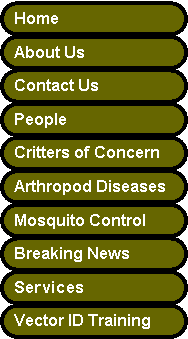
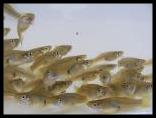
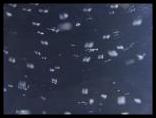
|
In some cases, Mosquito feeding fish or Copepods (tiny shrimp-like animals) and used to control mosquitoes. |
|
Photo: L. Minter, 2009 |
|
Photo: L. Minter, 2009 |
